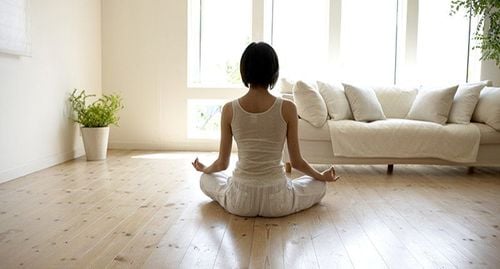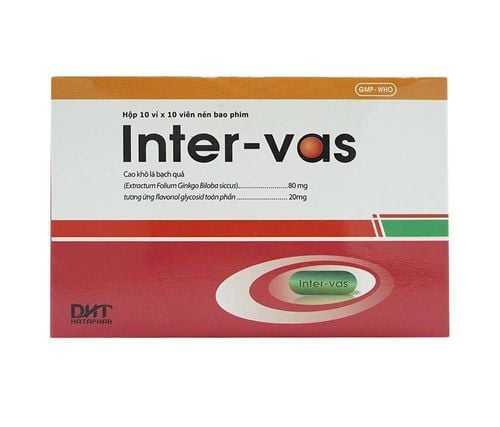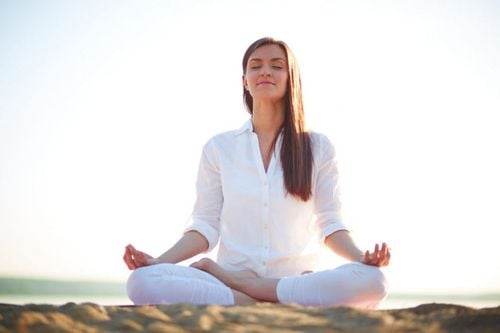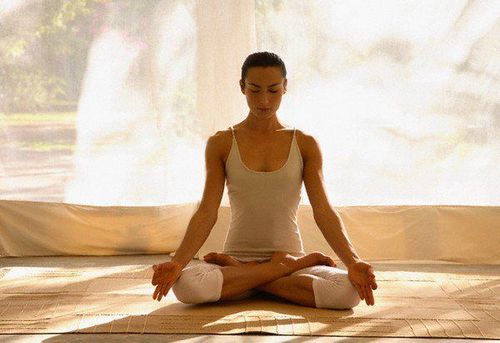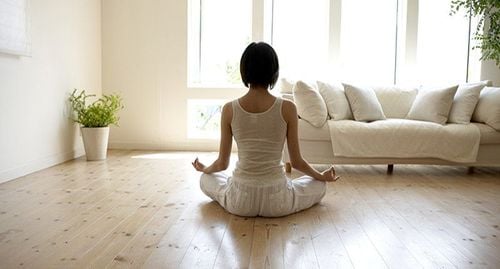This is an automatically translated article.
Meditation is an exercise for the brain and is a simple, quick way to relieve stress. Through meditation, we can build up regions of our brain and enhance positive traits like focus and decision-making, while reducing less-than-positive factors like fear and stress. Most importantly, it has the potential to change your brain for the better in a long-term way. Read on to learn more about meditation.1. Meditation: A Simple, Fast Way to Reduce Stress
Meditation can remove all the stress of the day and bring inner peace. If the stress of everyday life makes you anxious, consider trying meditation methods. Taking even a few minutes to meditate can restore calm and inner peace.Anyone can practice meditation because it's simple and doesn't cost too much and it doesn't require any special equipment. We can also practice meditation wherever we are - whether walking, taking the bus, waiting at the doctor's office, or even in the middle of an important business meeting.
1.1. Understanding meditation
Meditation has been practiced for thousands of years. Originally, meditation was a method to help people deepen their understanding of the sacred and mystical forces of life. Today, meditation has evolved and is commonly used for relaxation as well as stress relief. Meditation is considered a tonic for the mind and body. Meditation can induce a state of profound relaxation and calm the mind. While meditating, we focus our attention and remove the clutter of thoughts that can cause the mind to become pent up and cause stress. This process can lead to changes in both physical and mental health.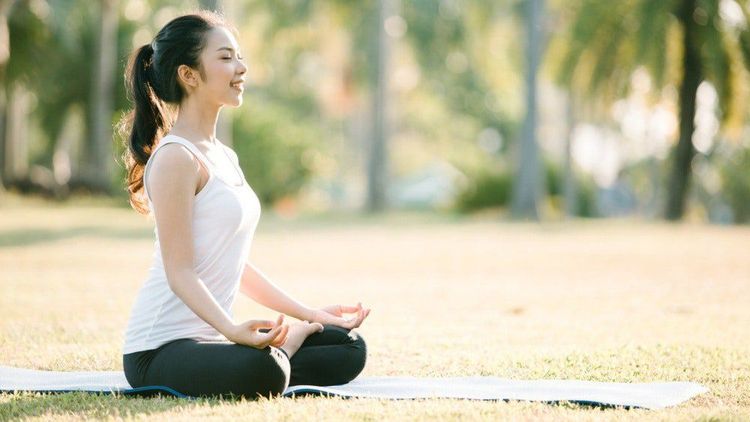
Thiền được coi là một loại thuốc bổ cho cả thể chất và tâm hồn con người
1.2. Benefits of meditation
Meditation can give us a sense of calm and balance that is beneficial for both our emotional well-being and overall well-being. And these benefits don't end when the session is over. Meditation can help calm us down during the day and can help manage the symptoms of certain medical conditions.When we meditate, we can eliminate the daily accumulation of information that contributes to stress. The emotional benefits of meditation may include:
Gain a new perspective on situations that can lead to stress Building skills to manage your stress Increase self-awareness Exercise focus on the present Reduces negative emotions Increases imagination and creativity Increases patience and endurance Meditation can also be helpful for people with health problems, especially those can be made worse by stress. Although there is a growing body of scientific research supporting the health benefits of meditation, some researchers still say that no conclusions can be drawn about the possible benefits of meditation. With that in mind, some studies suggest that meditation can help people manage symptoms of conditions such as:
Excessive worry Asthma Cancer Chronic pain Chronic stress, depression Metabolic cardiovascular disease High blood pressure Irritable bowel syndrome Sleep problems Headaches, stress Make sure to talk to your doctor about the pros and cons of meditation if you have one. any of these or other health problems. In some cases, meditation can worsen symptoms associated with certain physical and mental health conditions. It is also important to note that meditation is not a replacement for traditional medical treatments. But it can be a useful addition to that treatment.
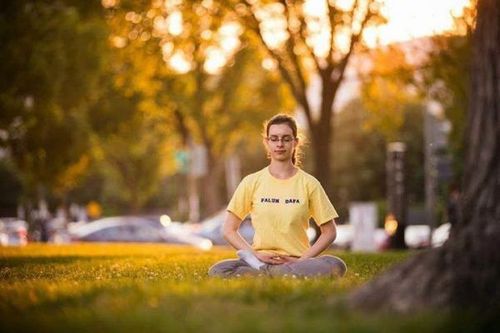
Thiền giảm căng thẳng, lo âu mang lại tinh thần thư thái, tâm trí bình an
1.3. Types of meditation to help reduce stress
Meditation is a general term for many ways to achieve a relaxed state of mind. There are many types of meditation and relaxation techniques that include meditation-related exercises. They all share the same goal of achieving inner peace of mind. Possible meditations include:Guided meditation. Sometimes called guided imagery or visualization meditation, with this meditation the practitioner is asked to form mental images of places or situations in which they feel relaxed. The practitioner will try to use as many senses as possible, such as smells, sights, sounds, and textures. This meditation method can be guided by a guide or teacher. Mantra meditation. In this type of meditation, the practitioner silently repeats a soothing word, thought, or phrase to prevent the thoughts from being distracted. Mindfulness meditation. This type of meditation is based on paying attention, or increasing awareness and acceptance of living in the present moment. In mindfulness meditation, you need to expand your conscious awareness. You must focus on what you experience during meditation, such as the flow of your breath. You can observe your thoughts and feelings, but let them pass without judgment. Vigor. This method often combines meditation, relaxation, body movement and breathing exercises to restore and maintain balance. Qi Gong (CHEE - gung) is a part of traditional Chinese medicine. Tai Chi is a gentle Chinese martial art form. In tai chi (TIE-CHEE), the practitioner performs a series of poses or movements at his or her own pace in a slow, fluid manner while practicing deep breathing. Transcendental Meditation. Transcendental Meditation is a fairly simple, natural technique. In Transcendental Meditation, the practitioner silently repeats a specifically designated statement, such as a word, sound, or phrase, in a specific way. This form of meditation can allow your body to transition into a state of deep rest, relaxation, and your mind to achieve a state of inner peace without focus or effort. Yoga. Practitioners perform a series of poses and controlled breathing exercises to promote a more flexible body and a calm mind. As they move through poses that require balance and focus, they are encouraged to focus less on their busy days and more on the moment.
2. Factors related to meditation
Different types of meditation may include different elements to help increase the effectiveness of the meditation. These factors depend on the guidance of the teachers in the meditation class. Some of the most common features in meditation include:Focused attention. Focusing attention is generally one of the most important elements of meditation. Focusing attention is what helps free our mind from many distractions that cause stress and anxiety. People who engage in meditation can focus their attention on things like a specific object, an image, a saying, or even their own breathing. Relaxed breathing. This technique requires the practitioner to breathe deeply, at a steady pace using the diaphragm to expand the lungs. The main goal is to slow down breathing, get more oxygen, and reduce the use of shoulder, neck and upper chest muscles while breathing to increase the efficiency of breathing for the body A quiet environment. If we are a beginner, practicing meditation can be easier if we are in a quiet place, with few distractions, without a television, computer or mobile device. Once adept at meditation, meditators can do it anywhere, especially in highly stressful situations where they benefit most from meditation, such as traffic jams, a stressful work meetings or long queues at the grocery store. A comfortable position. We can practice meditation whether we are sitting, lying down, walking or in other postures or activities. Only by trying to be comfortable can you get the most out of your meditation. Always try to keep good posture while meditating. Open attitude. Let thoughts pass through your mind without judging them. The thought of meditating "the right way" should not add to our stress. If you wish, you can attend special meditation centers or group classes led by trained instructors. But you can also practice meditation easily on your own. Some people are proactive in making meditation a part of their daily routine. For example, they might start and end each day with an hour of meditation.
Here are some ways that we can practice meditation on our own, whenever we want:
Breathe deeply. This technique is good for beginners because breathing is a natural function of the body. Focus all your attention on your breath. Focus on feeling and listening as you inhale and exhale through your nostrils. Breathe deeply and slowly. When distracted by other factors, gently return to focusing on your breathing.

Thiền nhiều có tốt không còn phụ thuộc vào hiệu quả của phương pháp thiền
Try different types of meditation and try to figure out what works best for you based on the things you enjoy doing. Tailor your meditation to your own needs at the moment. Remember, there is no right or wrong way to meditate. The important thing is that meditation helps reduce stress and makes us feel better about our overall health.
There are many forms of meditation that can help us relieve stress as well as provide certain health benefits. Some forms of meditation can be more appropriate and comfortable for us than others, so it's best to try and find the type of meditation that works best for you. If you practice meditation while not in stressful situations, you'll find it easier to use it as a technique to help you feel calmer when needed.
Please dial HOTLINE for more information or register for an appointment HERE. Download MyVinmec app to make appointments faster and to manage your bookings easily.
References: verywellmind.com, mayoclinic.org



